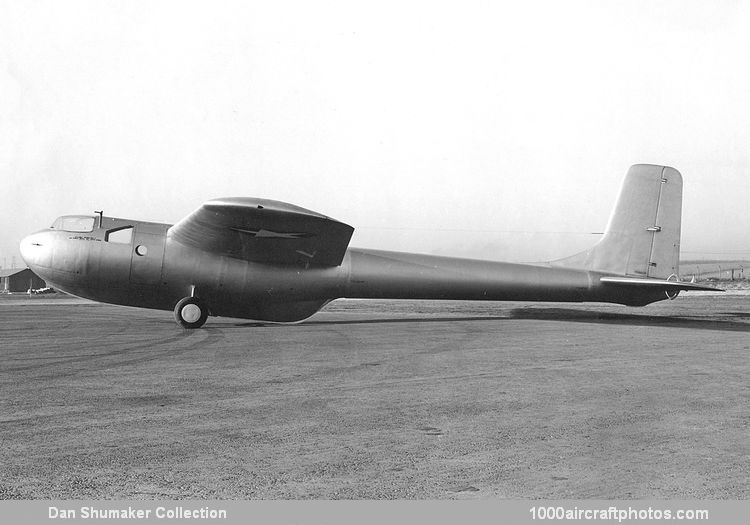07/31/2019. Remarks by Johan Visschedijk: "During the late 1930s Al Essig, the head of the advertising agency which handled the Douglas account, prevailed upon Donald Douglas to help finance the fledgling Bowlus Sailplanes Inc. This San Francisco-based company had been founded by William Hawley Bowlus and, at the time, was struggling to find a market for sailplanes. In spite of Donald Douglas's support, Bowlus Sailplanes remained a small company until America's entry into WW II.
However, William Bowlus had gained a fair reputation as a sailplane designer and thus, when in 1941 the USAAF Materiel Division requested proposals for cargo and training gliders, his entries were rewarded by Contract AC-20234 for the XCG-7 and XCG-8 and Purchase Order PO-17694 for the XTG-12 and TG-12A.
Bowlus had the facilities to build the XTG-12 and TG-12A two-seat training sailplanes but was unable to undertake manufacture of the larger XCG-7 and XCG-8. Thus, while proposing that quantity production of the cargo gliders be undertaken by subcontractors in the Midwest, William Bowlus turned to his friend Donald Douglas to provide facilities for manufacturing one static test and one flight test model of both the XCG-7 and XCG-8 which had been ordered on October 2, 1941. His request for assistance was favorably received and the task of building these four gliders was given to Douglas' El Segundo Division.
Designed to meet an USAAF specification for a nine-seat troop glider, the two XCG-7s received the El Segundo c/ns 1359 and 1360. The first was intended for flight test and received the USAAF serial 41-29621 whereas s/n 1360 which was to be used for static test only did not receive an USAAF serial number. The XCG-7 had a pod-and-boom configuration, was of wooden construction with semi-monocoque tubular tail boom, and had a design towing-speed of 120 mph (193 kmh).
The static test XCG-7 was the first to be completed and was delivered to Wright Field on February 10, 1942, and promptly failed under a structural test. After being repaired, the sailplane failed again in July 1942 while being subjected to towing loads of 40 to 60%. The 41-29621 was first flown on July 15, 1942, by then, however, the USAAF requirement for nine-seat troop gliders had been fulfilled by the Waco CG-3A and further development of the XCG-7 was suspended.
